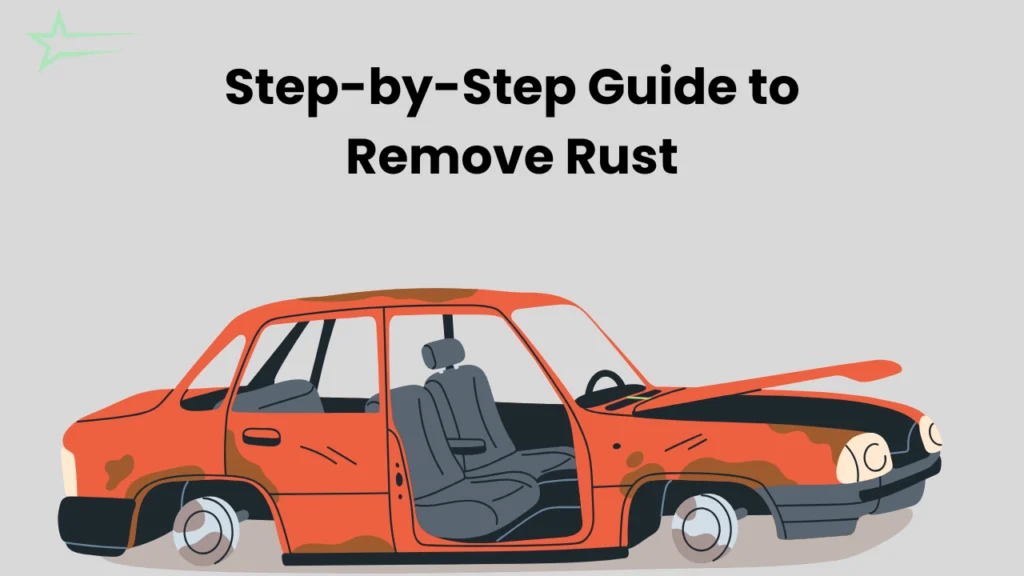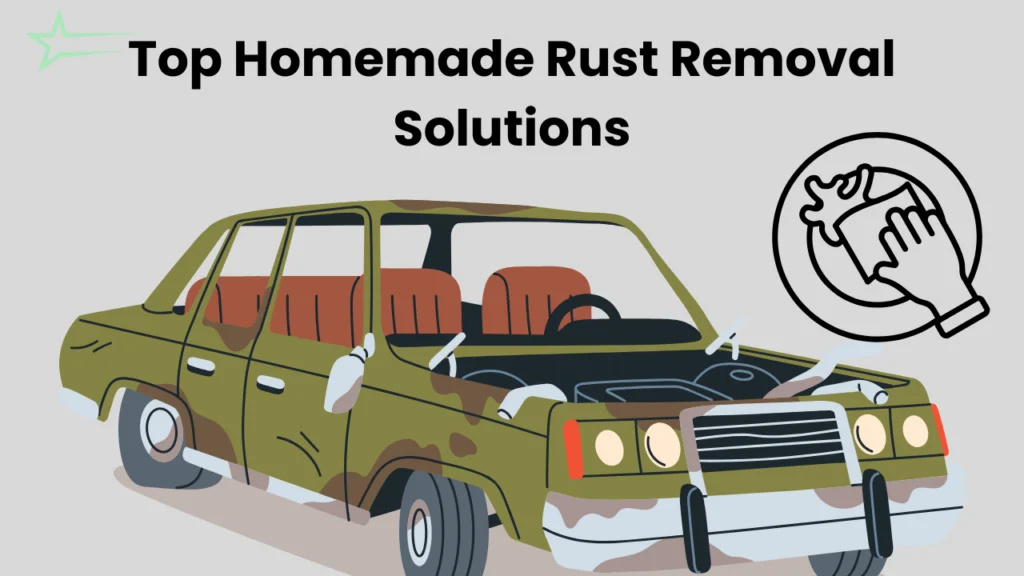How to Remove Rust from a Car? Rust is a common issue for cars, but with the right tools and techniques, you can remove it yourself and keep your vehicle looking great.
In this guide, we’ll walk through effective rust removal methods, discuss useful tools, and cover some frequently asked questions to help you get professional-quality results right at home.
Understanding Rust on Cars
Rust forms when metal reacts with oxygen and moisture. Road salt, scratches, and prolonged exposure to wet or humid conditions can speed up rust formation on cars.
Rust can weaken the metal, reduce your car’s resale value, and cause aesthetic damage if not handled early.
Tools and Materials Needed for Rust Removal
| Tool or Material | Purpose |
|---|---|
| Sandpaper (80-320 grit) | For scraping off rusted surfaces |
| Wire Brush | To remove rust from hard-to-reach spots |
| Rust Remover Solution | Helps dissolve stubborn rust |
| WD-40 or Vinegar | For lighter rust removal |
| Primer and Touch-Up Paint | Protects and finishes treated areas |
| Gloves and Safety Goggles | Safety while working with chemicals |
Step-by-Step Guide to Remove Rust

Follow these steps to remove rust from your car effectively:
1: Identify the Rusted Area
Begin by thoroughly inspecting your car. Rust typically appears near wheel wells, door frames, and the underbody. Clean the area with soap and water to remove dirt and dust.
2: Sand the Rusted Surface
Using sandpaper, start with a coarse grit (around 80-100) to remove surface rust. Gradually move to a finer grit (200-320) to smoothen the surface and prep it for treatment.
3: Apply a Rust Remover
For deeper rust, apply a rust remover or a homemade solution like vinegar and baking soda (explained below).
Allow the product to sit on the rusted surface for 15-30 minutes, then scrub off any remaining rust with a wire brush.
4: Prime and Paint
Once all rust is removed, apply a primer to protect the metal. Let it dry, then apply touch-up paint to blend the repaired area with the rest of your car.
5: Final Inspection
Ensure all rust is removed. Buff the surface to achieve a clean finish and prevent future rust from forming.
Top Homemade Rust Removal Solutions

Vinegar and Baking Soda Paste
One of the best homemade rust removers is a simple paste made from vinegar and baking soda.
- Mix equal parts vinegar and baking soda to form a paste.
- Apply the paste to the rusted area and let it sit for 15-20 minutes.
- Scrub the area with a sponge or cloth, rinse, and dry.
Lemon Juice and Salt Mixture
This mixture is highly effective for small, shallow rust spots.
- Sprinkle salt over the rust, then pour lemon juice over it.
- Let it sit for about 15 minutes.
- Scrub off the mixture and rinse well.
Does WD-40 Remove Rust?
Yes, WD-40 can be effective for light rust. Spray it on the area, allow it to sit for a few minutes, and then scrub with a wire brush or cloth.
Facts & Figures About Car Rust
- Rust Formation Speed: Cars in humid or coastal regions rust up to 10x faster.
- Effectiveness of DIY Removal: Homemade solutions can remove up to 80% of surface rust.
- Frequency of Treatment: A rust treatment every 6 months can extend a car’s life.
- Cost Savings: DIY rust removal can save $100–$300 in professional repair costs.
Pros and Cons of DIY Rust Removal
Pros:
- Cost-effective compared to professional services.
- Can be done with basic household items.
- Allows you to address rust as soon as it appears.
Cons:
- Requires time and patience.
- Homemade solutions may not work on deep or extensive rust.
- Inexperienced DIY work could lead to incomplete rust removal.
FAQs
What is the best homemade rust remover for a car?
The best homemade solution is a vinegar and baking soda paste. It’s affordable, effective, and widely available.
Can you remove rust from a car yourself?
Yes, with the right tools and instructions, you can remove rust yourself. It’s a straightforward process if the rust is minor or surface-level.
Does WD-40 remove rust from cars?
WD-40 can help loosen light rust, but it may not be effective for deeper corrosion. Use it primarily as a preventative measure or for spot treatment.
How to remove rust stains from a car body?
Start by sanding the area, then apply a rust remover or homemade solution. Scrub, rinse, prime, and paint to restore the bodywork.
Conclusion and Tips for Prevention
Removing rust from your car is a simple DIY task if done early. By following the steps outlined, you can save on repair costs and keep your vehicle in top condition.
For best results, use a combination of commercial and homemade rust removers depending on the rust level. Regularly clean your car, apply wax, and touch up any paint chips to prevent rust from forming in the future.
Taking preventative action is key to a rust-free car. Regular washes, applying protective coatings, and promptly treating any scratches will help you avoid rust damage in the long run.
In conclusion, removing rust from your car not only improves its appearance but also prolongs its lifespan and maintains its resale value. Tackling rust early prevents it from spreading and causing more severe damage to the metal.
DIY rust removal can be cost-effective, especially when using household items like vinegar and baking soda, but knowing when to use professional-grade products is also valuable.
Remember, prevention is as important as removal. Regular inspections, applying wax, and using rust-proof coatings can keep rust at bay.
Rust treatment may seem time-consuming, but these efforts pay off by preserving your vehicle’s structural integrity and aesthetic appeal. With the right techniques and a little patience, you can effectively manage rust and keep your car looking and performing at its best. Watch Video
Related Articles
How to Jump Start a Car with a Jump Starter
How to reduce car engine noise while driving?











1 thought on “How to Remove Rust from a Car: Complete DIY Guide”